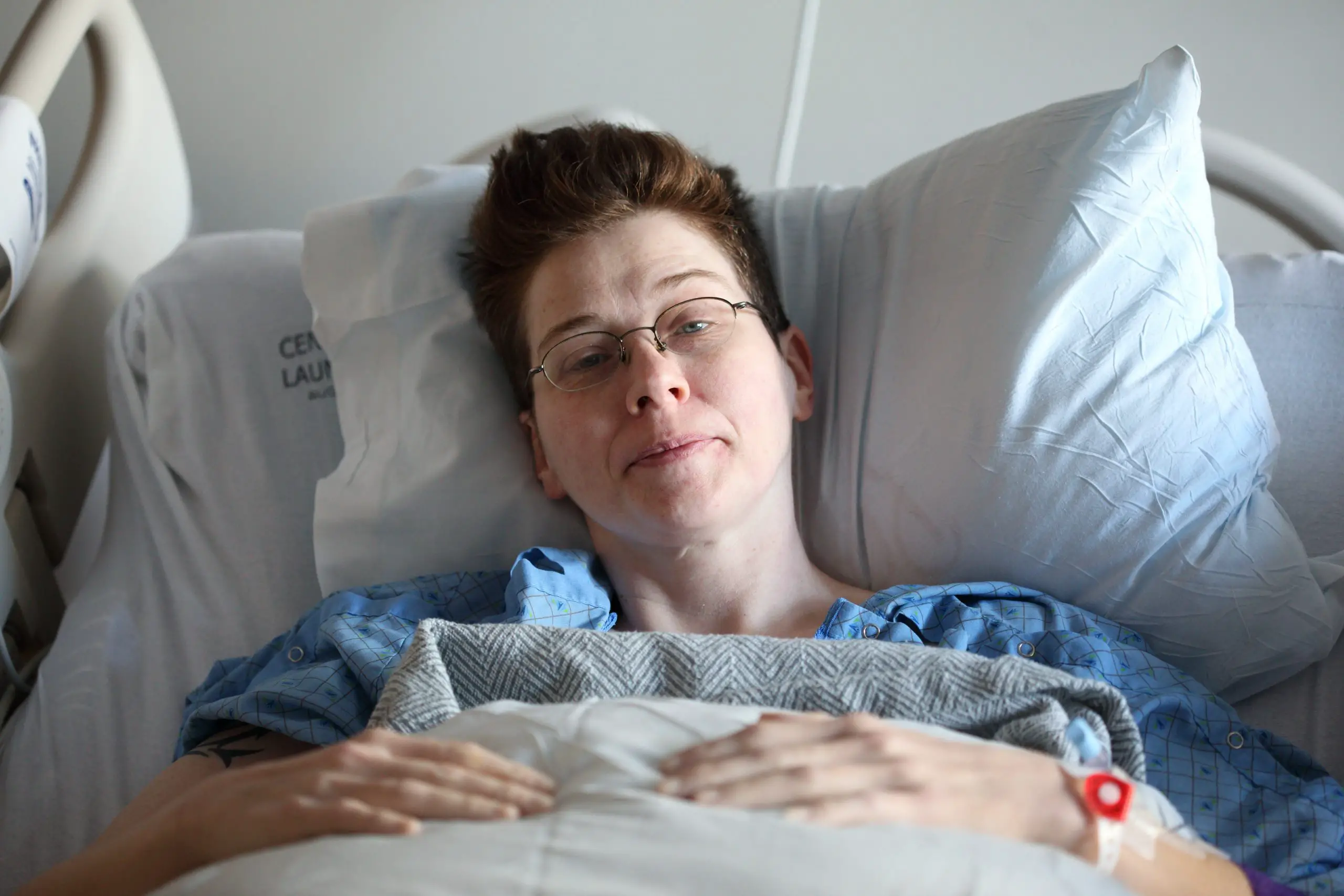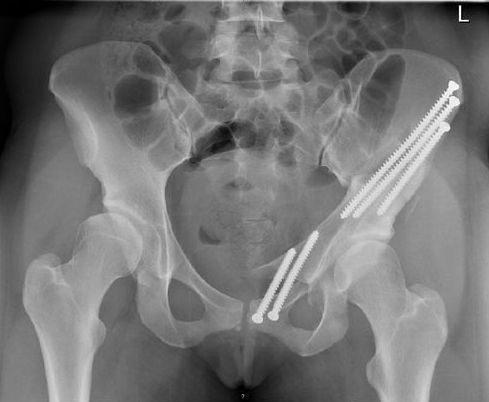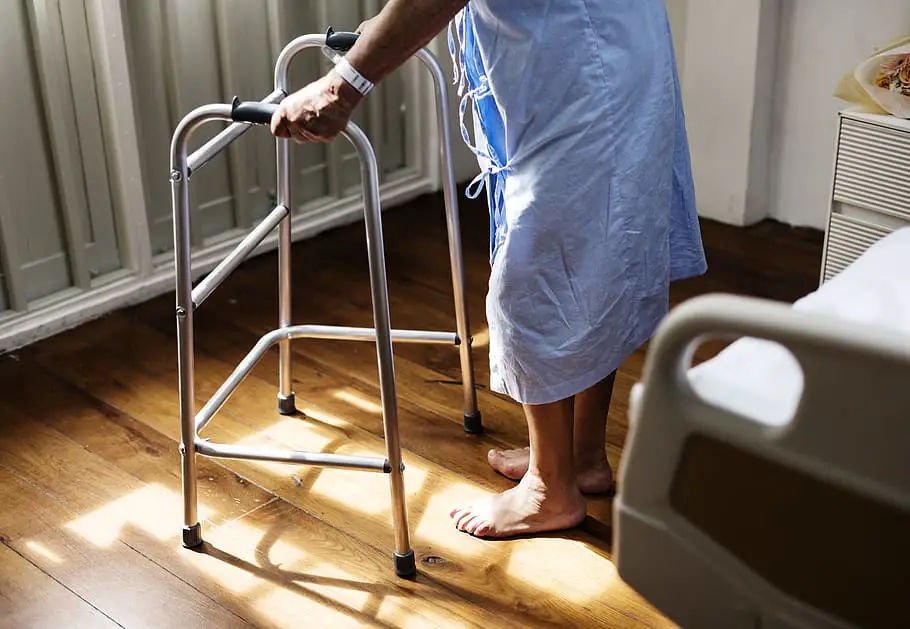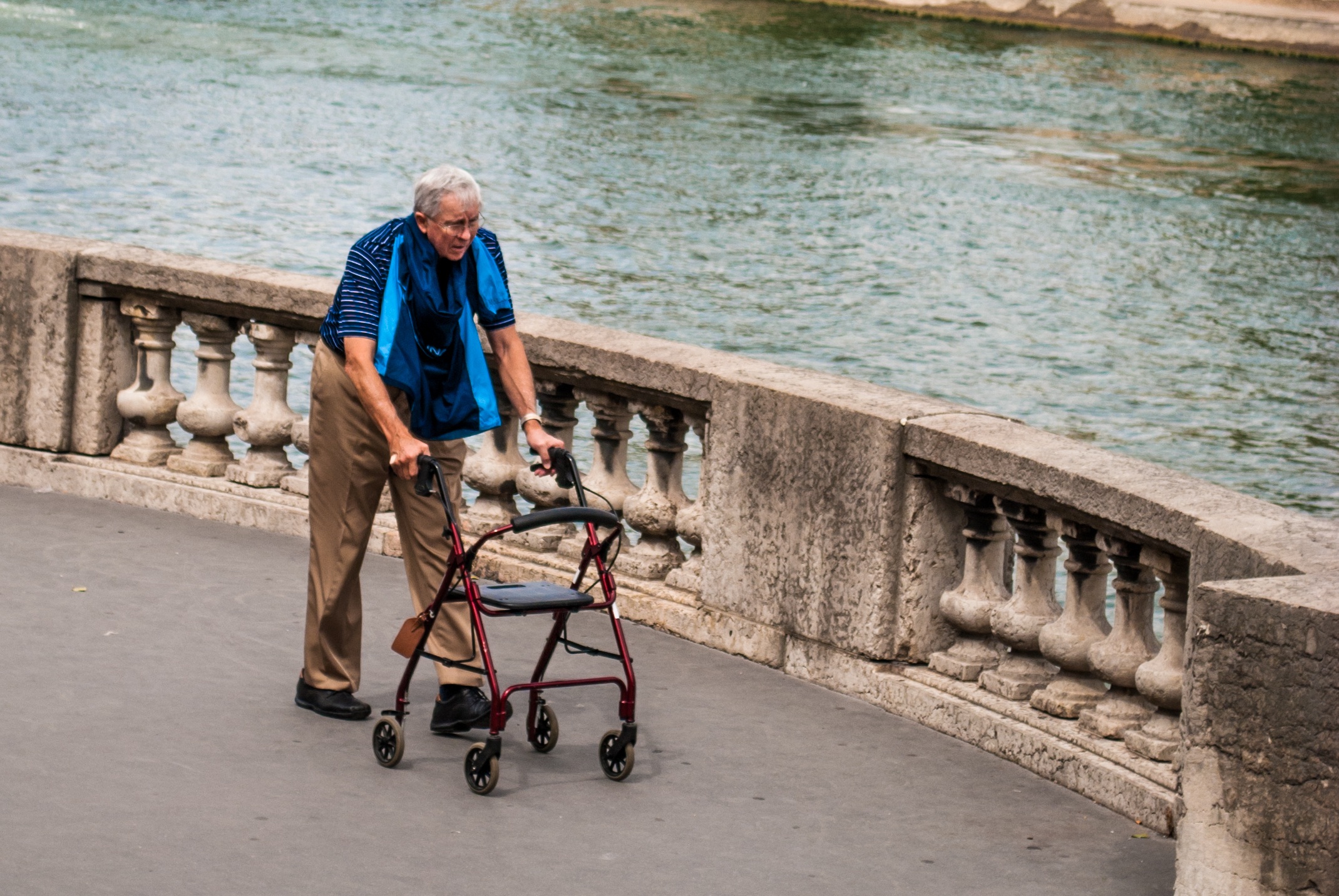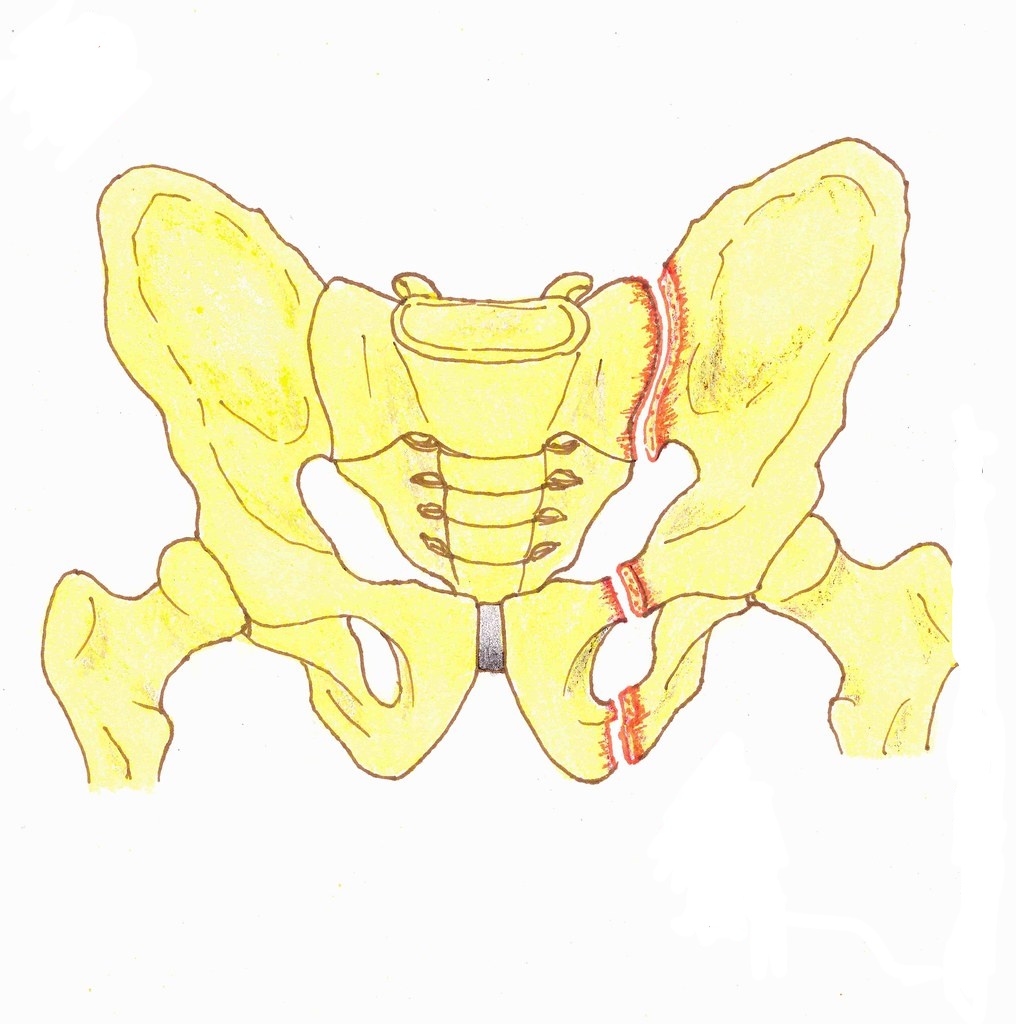A pelvic fracture is a break in one or more of the bones that make up the pelvis. The classification of a pelvic fracture is based on the direction of the break: vertical (type A), transverse (type B) or oblique (type C).
The broken bones type C are the most hemorrhagic, followed by broken bones type A and B. In addition, the broken bones displacement greater than 0,5 cm are associated with a higher risk of bleeding.
Whole anatomy of the pelvis
Le pelvis is a bowl-shaped structure which supports the weight of the abdomen and transmits it to the lower limbs. The pelvic belt consists of two hip bones, which meet at the symphysis pubis.
The superior branch of the pubis extends laterally from the symphysis pubis and articulates with the ilium at the level of the acetabulum.
The ilium is the largest and most superior of the three bones that make up each half of the pelvis. It forms most of the squat bone surface, which serves as an attachment to certain abdominal muscles.
ischium form the face postero-inferior of each half of the pelvis. It articulates with the ilium at the level of a rounded process called the great notch. sciatica and contributes to the formation of another attachment site for the abdominal muscles, called the lesser sciatic notch.
The last bone that makes up each half of the pelvis is the pubis, which articulates with the ilium and ischium. Together, these three bones form a solid bony ring that protects the pelvic organs and serves as an attachment for the muscles that move the lower limbs.
A pelvic fracture what's this ? Definition
A pelvic fracture is a rupture of the pelvic bones that can occur as a result of high-impact trauma, such as a car accident or a fall from a height. The symptoms of a pelvic fracture include a groin pain or lower back, difficulty walking, and bruising or swelling in the area of the injury.
If the pelvic bones are broken, bone fragments can puncture blood vessels or damage organs, leading to potentially fatal internal bleeding. Treatment for a pelvic fracture usually involves surgery to repair the broken bones, followed by a period of rest and physical therapy to aid recovery.
In severe cases, however, damage to the pelvis can be so extensive that it cannot be fully repaired, resulting in lifelong disability. Therefore, it is important to take precautions to avoid high impact injuries that could lead to a broken pelvis.
Wearing seat belts while driving and using appropriate safety equipment when engaging in activities involving the risk of falling (eg, climbing) can help reduce the risk of falling. of injury.
Types of fracture and classification
There are three main types of broken bones : broken bones type A, type B and type C.
The broken bones A-type
The broken bones Type A are the most common and account for approximately 80% of all broken bones.
A type A fracture is a break in the outermost part of the bone. The injury occurs when the bone is unable to withstand the force of the impact.
The broken bones type A are commonly seen in sports, where the risk of collision is high. They can also occur in car crashes and other high-impact accidents. The most common type of type A fracture is a linear fracture, that is, a fracture that goes right through the bone.
This type of fracture usually heals without surgery. However, the broken bones More serious type A may require surgery to repair the damage. In some cases, metal pins or plates may be used to stabilize the bone so it can heal properly.
The broken bones type B
The broken bones type B are less common and account for approximately 15% of all broken bones.
A type B fracture is a fracture that occurs in the lower part of the radius, or the forearm bone on the side of the thumb. This type of injury is most common in young children, who are still growing and have not yet reached full skeletal maturity.
Because the radius is one of the largest bones in the forearm, a type B fracture usually requires surgery to heal properly.
The broken bones C-type
The broken bones type C are the least common and account for approximately 5% of all broken bones. They occur when the bone is broken, for example during a car accident.
Treatment for each type of fracture varies depending on the severity of the injury.
A type C fracture is the name given to a break or cracks in the vertebrae, the bones that make up your spine. These broken bones can occur anywhere along the spine, from the neck to the lower back.
Although they are more common in older people, young people can also suffer from them. Most of broken bones type C are due to osteoporosis, a disease that weakens bones and makes them more likely to break.
However, other causes are possible, including bone tumors, trauma, and certain diseases that lead to bone loss.
Pelvic fracture : Diagnostic
Le diagnostic process of a patient traditionally involves taking a medical history, performing a physical examination and ordering tests if necessary. With the advent of new technologies, the diagnostic process has become increasingly complex.
For example, imaging studies such as MRI and CT scans can provide detailed images of the body, which helps determine the cause of symptoms.
In addition, the blood tests and urine can help rule out or confirm certain illnesses. Ultimately, the goal of diagnosis is to identify the cause of a patient's symptoms in order to institute appropriate treatment.
With the help of new technologies, doctors are better able to make an accurate diagnosis and provide patients with the care they need.


